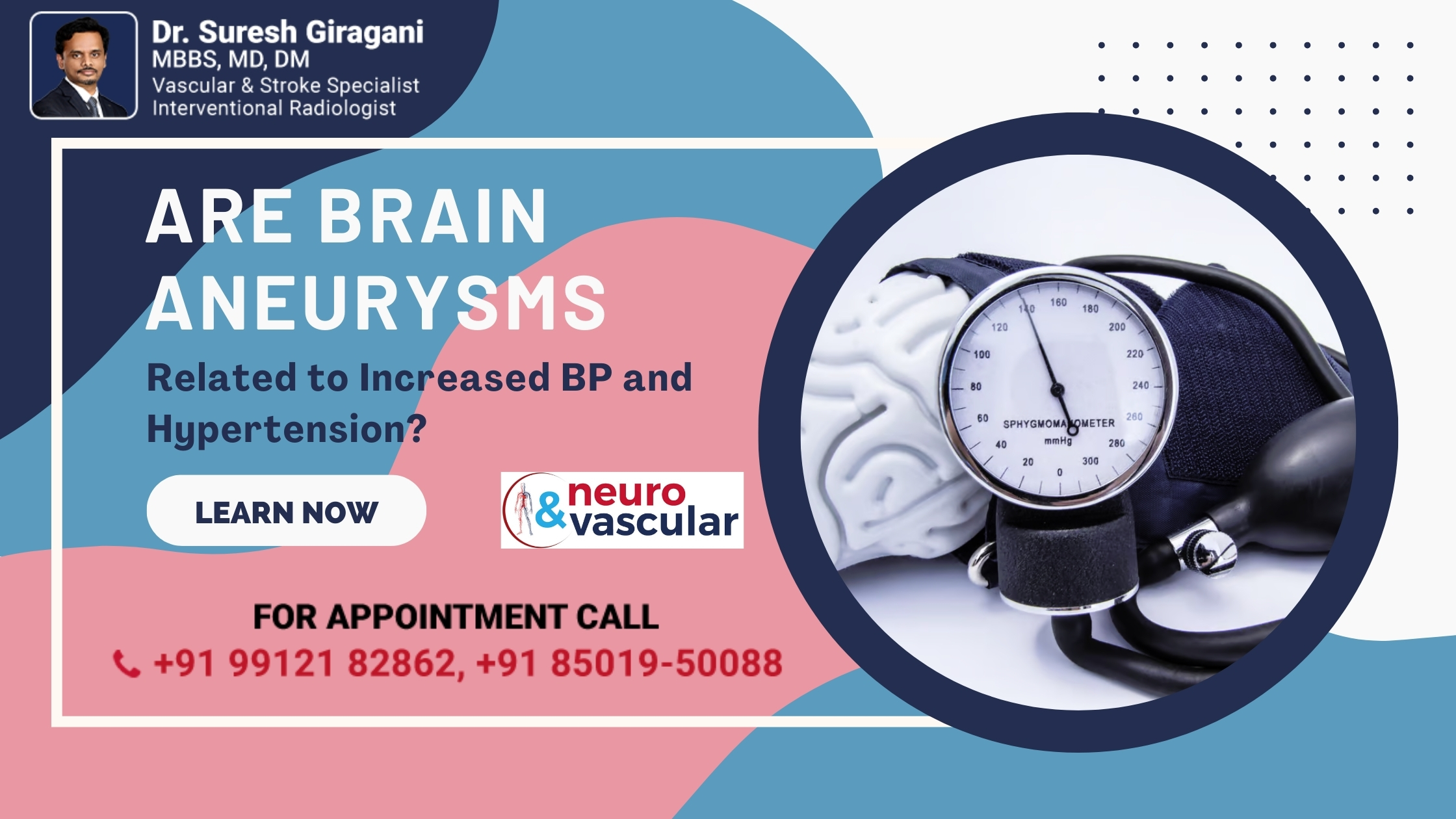
Are Brain Aneurysms Related to Increased BP and Hypertension?

Brain aneurysms are a serious medical condition that can have life-threatening consequences if they rupture. Understanding the risk factors associated with brain aneurysms is crucial for prevention and early detection. One significant factor often discussed in relation to brain aneurysms is hypertension, or high blood pressure. But what exactly is the connection between these two conditions? In this blog, we’ll explore the relationship between brain aneurysms and increased blood pressure, shedding light on how hypertension can impact brain health. We’ll also discuss the available interventional treatments for brain aneurysms.
What is a Brain Aneurysm?
A brain aneurysm, also known as an intracranial or cerebral aneurysm, is a bulge or ballooning in a blood vessel in the brain. This bulge is caused by a weakness in the wall of the artery. Brain aneurysms can vary in size and severity, and while some may remain small and asymptomatic, others can grow larger and eventually rupture, leading to a hemorrhagic stroke, which can be fatal.
Understanding Hypertension
Hypertension, commonly known as high blood pressure, occurs when the force of blood against the artery walls is consistently too high. Blood pressure is measured in millimeters of mercury (mm Hg) and recorded as two numbers: systolic (pressure during heartbeats) and diastolic (pressure between beats). A normal blood pressure reading is typically around 120/80 mm Hg. Hypertension is diagnosed when blood pressure readings consistently exceed 130/80 mm Hg.
The Link Between Hypertension and Brain Aneurysms:
Research has shown a significant connection between hypertension and the development and rupture of brain aneurysms. Here’s how increased blood pressure can influence the formation and risk associated with brain aneurysms:
- Weakening of Arterial Walls:
- Chronic high blood pressure exerts continuous force against the arterial walls, causing them to weaken over time. This weakening makes the arteries more susceptible to forming aneurysms, particularly in the delicate vessels in the brain.
- Increased Aneurysm Growth:
- Once an aneurysm has formed, hypertension can contribute to its growth. The constant pressure from high blood pressure can cause the aneurysm to expand, increasing the risk of rupture.
- Higher Risk of Rupture:
- Individuals with hypertension are at a higher risk of aneurysm rupture. A ruptured brain aneurysm leads to a hemorrhagic stroke, which can cause brain damage, neurological deficits, and death if not promptly treated
Preventing Brain Aneurysms: Managing Blood Pressure:
Given the clear link between hypertension and brain aneurysms, managing blood pressure is a crucial step in reducing the risk of developing and rupturing brain aneurysms. Here are some effective strategies for controlling blood pressure:
- Regular Monitoring:
- Keep track of your blood pressure readings regularly. Home blood pressure monitors can be helpful, and regular check-ups with our interventional radiologist provider are essential.
- Healthy Diet:
- Adopt a diet rich in fruits, vegetables, whole grains, and lean proteins. Reduce intake of salt, saturated fats, and cholesterol to maintain healthy blood pressure levels.
- Exercise Regularly:
- Engage in regular physical activity such as walking, swimming, or cycling. Aim for at least 150 minutes of moderate-intensity exercise each week.
- Maintain a Healthy Weight:
- Being overweight or obese can increase your risk of hypertension. Losing even a small amount of weight can help lower your blood pressure.
- Limit Alcohol and Avoid Tobacco:
- Excessive alcohol consumption can raise blood pressure. Limit alcohol intake to moderate levels, and avoid tobacco use entirely as it significantly contributes to hypertension.
- Medication Adherence:
-
- If prescribed antihypertensive medication, take it as directed by your doctor provider. Skipping doses can lead to uncontrolled blood pressure.
Interventional Treatments for Brain Aneurysms
In cases where a brain aneurysm is identified, interventional treatments may be necessary to prevent rupture. Here are the primary interventional treatments available:
- Endovascular Coiling:
- This Endovascular Coiling is a minimally invasive procedure involves inserting a catheter into the artery, guiding it to the aneurysm, and filling the aneurysm with soft platinum coils. These coils induce clotting within the aneurysm, preventing blood from entering and thereby reducing the risk of rupture.
- Surgical Clipping:
- This procedure requires a craniotomy, where a surgeon opens the skull to access the aneurysm. A metal clip is then placed at the base of the aneurysm to stop blood flow into it, effectively isolating it from the normal blood circulation.
- Flow Diversion:
- This technique uses a stent-like device placed in the artery where the aneurysm is located. The device diverts blood flow away from the aneurysm, promoting clotting within the aneurysm and reducing the risk of rupture over time.
Conclusion:
Understanding the relationship between brain aneurysms and hypertension underscores the importance of managing blood pressure to maintain overall brain health. By adopting a healthy lifestyle and following medical advice, individuals can significantly reduce their risk of developing and experiencing complications from brain aneurysms. If you have hypertension or are at risk for brain aneurysms, consult with our best interventional radiologist in Hyderabad to develop a comprehensive plan for monitoring and managing your condition. Prevention, early intervention, and advanced interventional treatments are key to safeguarding your brain health and overall well-being.
About the Author:

Name: DR . SURESH GIRAGANI
INTERVENTIONAL RADIOLOGIST
DR. SURESH GIRAGANI CONSULTANT INTERVENTIONAL RADIOLOGIST at Apollo hospitals Jubilee Hills has more than sixteen years of clinical experience in vascular interventions with a special interest in neurovascular and peripheral vascular disease interventional procedures.